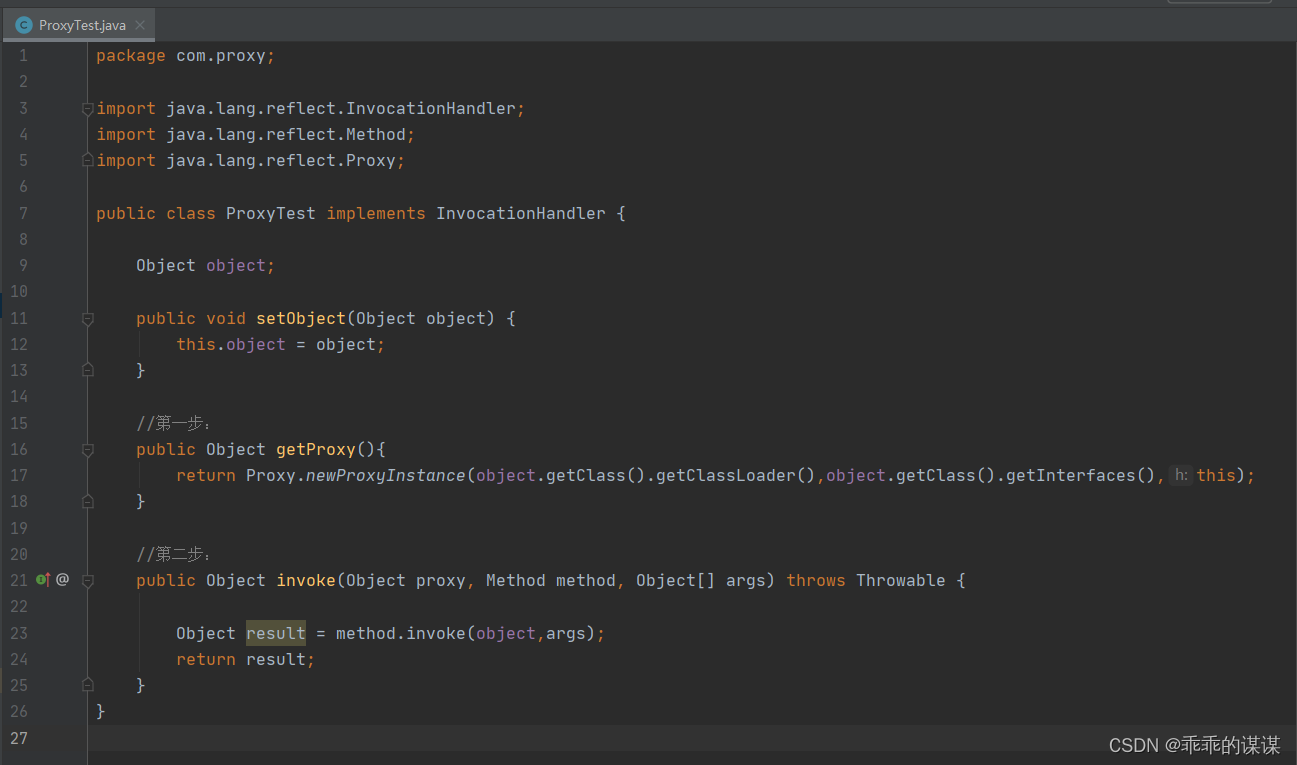1、AOP动态代理
1.1第一步
这里调用了Proxy的newProxyInstance()方法,点进这个方法:
再点进getProxyClass0()方法查看:
@CallerSensitive
public static Object newProxyInstance(ClassLoader loader,
Class<?>[] interfaces,
InvocationHandler h)
throws IllegalArgumentException
{
Objects.requireNonNull(h);
final Class<?>[] intfs = interfaces.clone();
final SecurityManager sm = System.getSecurityManager();
if (sm != null) {
checkProxyAccess(Reflection.getCallerClass(), loader, intfs);
}
/*
* Look up or generate the designated proxy class.
*/
//生成代理类
Class<?> cl = getProxyClass0(loader, intfs);
/*
* Invoke its constructor with the designated invocation handler.
*/
try {
if (sm != null) {
checkNewProxyPermission(Reflection.getCallerClass(), cl);
}
//获取构造器
final Constructor<?> cons = cl.getConstructor(constructorParams);
final InvocationHandler ih = h;
if (!Modifier.isPublic(cl.getModifiers())) {
AccessController.doPrivileged(new PrivilegedAction<Void>() {
public Void run() {
cons.setAccessible(true);
return null;
}
});
}
// 使用我们实现的InvocationHandler作为参数调用构造方法来获得代理类的实例(实例化对象)
return cons.newInstance(new Object[]{h});
} catch (IllegalAccessException|InstantiationException e) {
throw new InternalError(e.toString(), e);
} catch (InvocationTargetException e) {
Throwable t = e.getCause();
if (t instanceof RuntimeException) {
throw (RuntimeException) t;
} else {
throw new InternalError(t.toString(), t);
}
} catch (NoSuchMethodException e) {
throw new InternalError(e.toString(), e);
}
}其中newInstance只是调用Constructor.newInstance来构造相应的代理类实例,这里重点是看getProxyClass0这个方法的实现:
private static Class<?> getProxyClass0(ClassLoader loader,
Class<?>... interfaces) {
// 代理的接口数量不能超过65535
if (interfaces.length > 65535) {
throw new IllegalArgumentException("interface limit exceeded");
}
// JDK对代理进行了缓存,如果已经存在相应的代理类,则直接返回,否则才会通过ProxyClassFactory来创建代理
return proxyClassCache.get(loader, interfaces);
}走缓存,缓存里没有会通过ProxyClassFactory来创建代理
newInstance()方法:
public T newInstance(Object ... initargs)
throws InstantiationException, IllegalAccessException,
IllegalArgumentException, InvocationTargetException
{
if (!override) {
if (!Reflection.quickCheckMemberAccess(clazz, modifiers)) {
Class<?> caller = Reflection.getCallerClass();
checkAccess(caller, clazz, null, modifiers);
}
}
if ((clazz.getModifiers() & Modifier.ENUM) != 0)
throw new IllegalArgumentException("Cannot reflectively create enum objects");
ConstructorAccessor ca = constructorAccessor; // read volatile
if (ca == null) {
ca = acquireConstructorAccessor();
}
@SuppressWarnings("unchecked")
T inst = (T) ca.newInstance(initargs);//获取实例并返回
return inst;
}





















 6816
6816

 被折叠的 条评论
为什么被折叠?
被折叠的 条评论
为什么被折叠?








